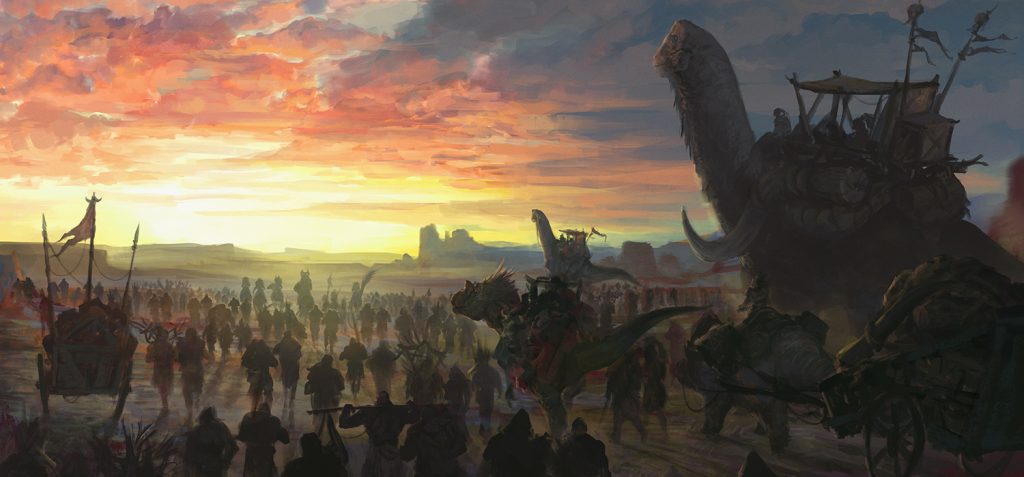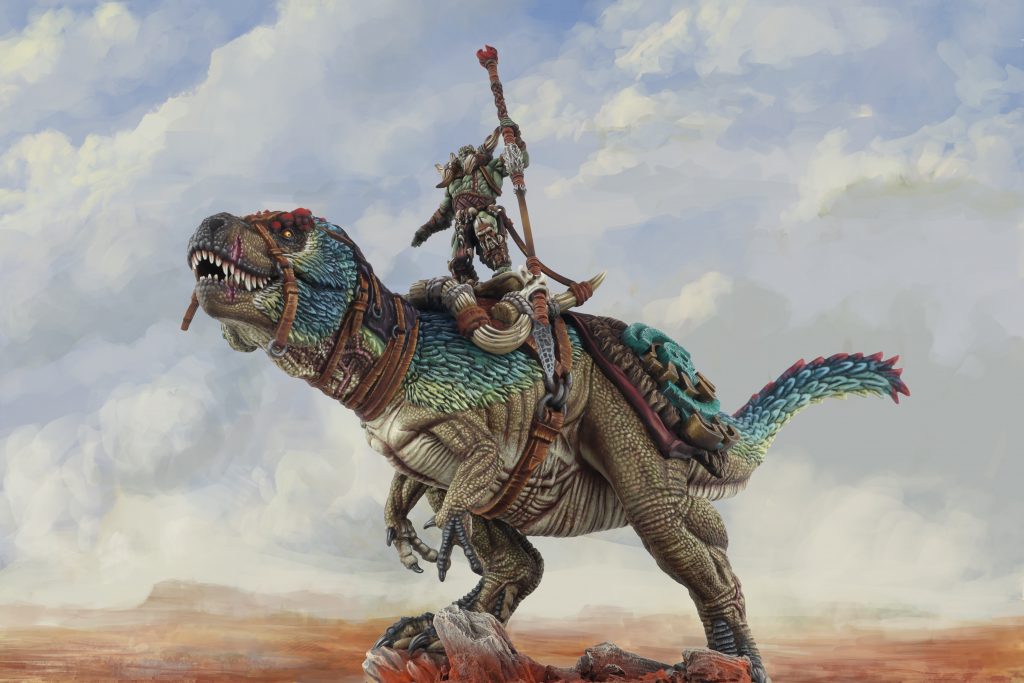Who are the W’adrhun?
Orcs on Dinosaurs! Enough said…
On a more serious note, the W’adrhun were created by the Spires when they tired of spawning their armies and sought instead to breed them. Driven by their own sense of superiority and perfectionism, initial failures led the Spires to create the Primes: W’adrhun bodies powerful and perfect enough that they could be animated by the Primordial Aspects of War, Death, Famine and Conquest. Prematurely unleashed upon the Dweghom during the Fall, Conquest, the living goddess of the W’adrhun orchestrated their escape and survival even as her siblings each perished in the conflagration. Bred for war and baptized in the flames of battle, the W’adrhun have nonetheless struggled to find their own path in the world, seeking to shape their own culture away from the overwhelming influence of their own tailored creation.

How do they play?
W’adrhun are an elite, aggressive, army that must maintain an aggressive tempo and seize the initiative. Their unique War Chant mechanic allows each unit to chant a portion of a battlecry, growing in power as it reaches a crescendo, allowing the units that chant the Finale to receive significant bonuses to offense defense and mobility depending on which member of the pantheon the chant is dedicated to.
While the W’adrhun pay for their elite infantry and vicious dinosaur cavalry dearly, the flexibility afforded to them by the War Chants allows them to cover ground fast, hit harder and last longer than their raw stats would seem to indicate as you push the attack and build up powerful abilities on your units at the same time. Coupled with the wide variety of monster the W’adrhun can field, this makes for a powerful offensive force.
Why should I collect them?
If you enjoy Dinosaurs, monster heavy armies, or very elite armies, you’ll enjoy the W’adrhun. In addition players who enjoy creating powerful combos and synergistic play will love the army, seeing a chain of abilities go off in exactly the right order cascading down the board is incredibly satisfying. While it supports a more aggressive playstyles, the army is very capable of fitting a defensive role too, many of the more elite regiments are very difficult to bring down.
In general W’adrhun are a thinker’s army. While they require some finesse, once things fall into place you’ll be able to combine abilities to create some of the most powerful combos in the game.

Where do I start?
If you wish to start the Tribes, the leader’s of the W’adrhun as a people and their warriors, a Matriarch Queen is a must have, in addition Warbred and Blooded make an excellent choice to begin the army.
If you want to start the Cults, some patience will be needed as the Chosen release at the end of 2022. Those who have dedicated themselves to the horsemen and are the most elite infantry in the army, a Scion of Conquest with Blooded and Chosen of Conquest on release are going to be your best option to begin that path.
If you’d like to start the Speakers, commanding the powerful monsters and war beasts of the W’adrhun, the W’adrhun Single Player Starter Set with a unit of Raptor Riders or an Apex Predator is the ideal start.